The Holocaust will soon pass from living memory. Before we lose the first-hand stories of survivors, we must record their testimony for future generations.
Personal testimonies from Holocaust survivors leave an indelible impression on all who hear them. As the Holocaust begins to pass from living memory, we lose access to the first-hand accounts of survivors. The stories of survivors must be heard, recorded and their experiences shared. These encounters inform our awareness about discrimination and prejudice, prompting listeners to reflect on the Holocaust and its meaning in the world today.
Several Jewish survivors of the Holocaust moved to Ireland after the Second World War. Some were brought here as child refugees from Bergen-Belsen concentration camp by Bob Collis, a doctor who volunteered with the British Red Cross there after the war. Others arrived by other means and made their homes in Ireland.
Today, there are three living Holocaust survivors in Ireland: Suzi Diamond, Tomi Reichental and Joe Veselsky.
Who are the survivors?
Documenting who survived the Holocaust is a difficult process. Before the Second World War, approximately nine and a half million Jewish people lived in European countries later subject to Nazi occupation. By the end of the war in Europe, six million Jewish people had perished and some three and a half million people had survived. Thousands had escaped to other countries through programmes like the Kindertransports; many more evaded, survived or ultimately perished
Holocaust survivors who have lived in Ireland
-

Suzi Diamond
-

Jan Kaminski
-

Inge Radford
-

Tomi Reichental
-

Geoffrey Philips
-

Doris Segal
-

Walter Sekules
-

Joe Veselsky
-

Edith Zinn-Collis
-

Zoltan Zinn-Collis
Holocaust survivors living in Ireland
Discover more about those Holocaust survivors who called and still call Ireland home, their lives, and message for future generations.
This 40-minute documentary features interviews Suzi Diamond, Jan Kaminski, Inge Radford, Tomi Reichental and Rosel Siev, all recounting their stories of survival during the Holocaust. Please click here to view the film.
Their stories
“We arrive at the site and walk slowly up to an open area with forest all around us. It is now a peaceful, tranquil place but for me, 63 years too late! When I arrived in 1944 it was ‘hell on earth’. This open area represented an open graveyard. The memories flood my mind - back then there were corpses lying all around as far as the eye could see. The enormity of this place hits us when we pass the mounds of earth which are the mass graves containing thousands of corpses. Each one has a concrete plaque stating the number buried within: 2,500, 1,00 and on and on. It is, in fact, one of the largest cemeteries in Europe. ”
“In July 1944, Adolf Eichmann oversaw the round-up and deportation of nearly half a million Hungarian Jews in just eight weeks. The majority of them were sent directly to Auschwitz-Birkenau where most of them perished in the gas chambers. Some were sent to other concentration camps. During those weeks, the Gestapo came for my mother, brother and me. We were deported first to Ravensbruck and then to Bergen-Belsen concentration camp, where we remained until we were liberated in April 1945.”
Find out more
-

Ireland and the Holocaust
Explore how Ireland was shaped by the Holocaust, the roles played by Irish people in it and the stories of survivors who have in Ireland.
-

Holocaust Memorial Day 2023
Learn more about Ireland’s national Holocaust Memorial Day commemoration and register for attendance in 2023.


